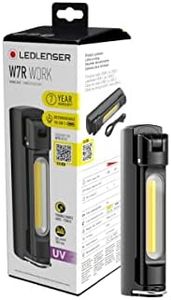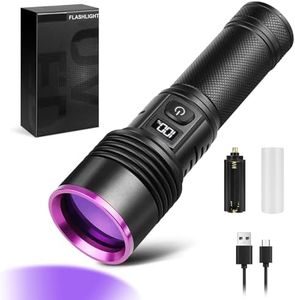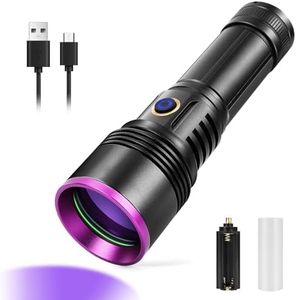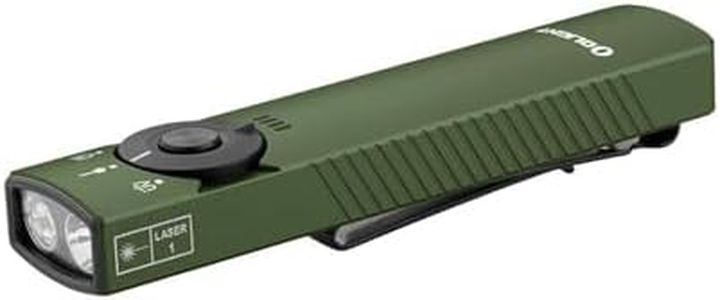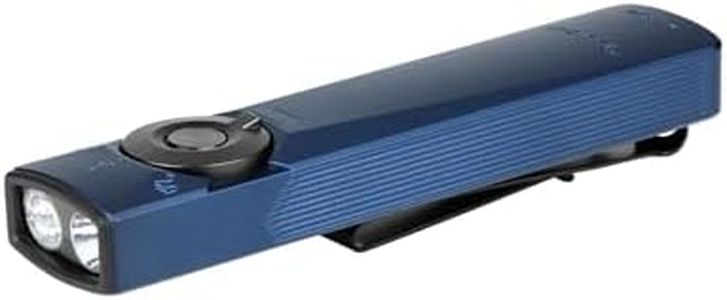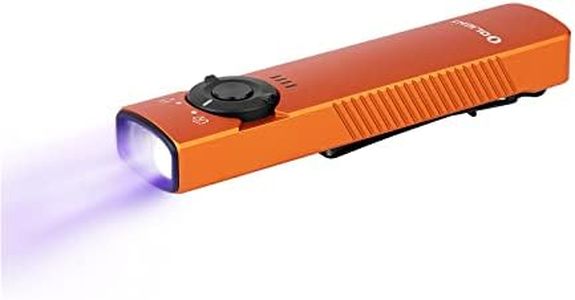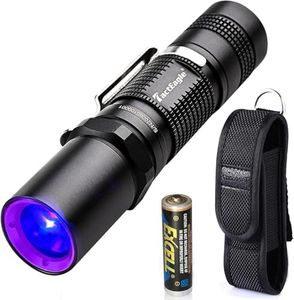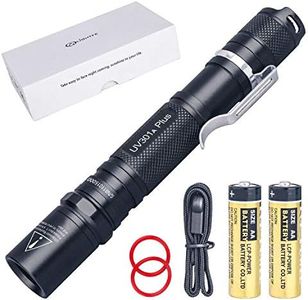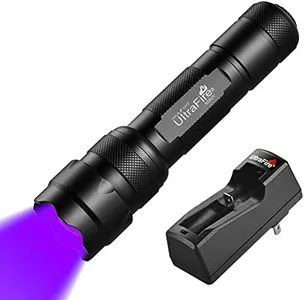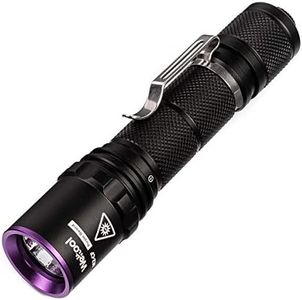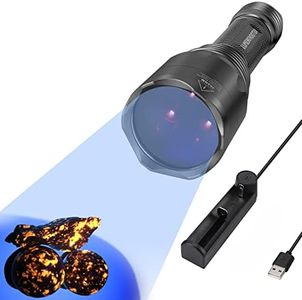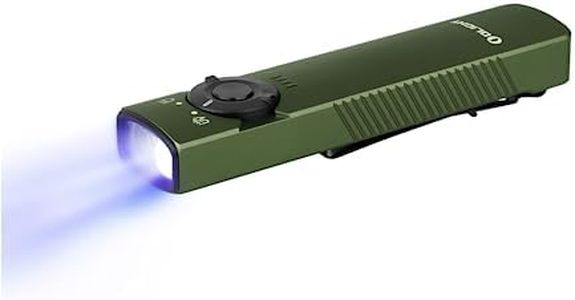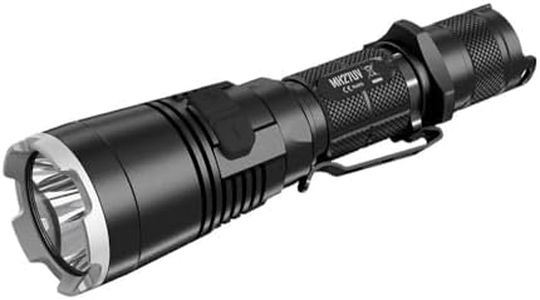We Use CookiesWe use cookies to enhance the security, performance,
functionality and for analytical and promotional activities. By continuing to browse this site you
are agreeing to our privacy policy
10 Best Uv Flashlight For Rocks And Minerals
From leading brands and best sellers available on the web.Buying Guide for the Best Uv Flashlight For Rocks And Minerals
Choosing the right UV flashlight for rocks and minerals can make a big difference in your ability to spot and study fluorescent specimens. The ideal UV flashlight should help you reveal colors and patterns in minerals that are invisible under normal light. To make the best choice, it’s important to know which specifications matter most and how they relate to your needs, such as fieldwork, casual collecting, or scientific study. Here are the key factors to consider when picking a UV flashlight for rocks and minerals.WavelengthWavelength refers to the type of ultraviolet light the flashlight emits, usually measured in nanometers (nm). For mineral and rock hunting, the most common wavelengths are long-wave (around 365nm to 395nm) and short-wave (around 254nm). This is important because different minerals react to different UV wavelengths, giving off varying colors and intensities. Long-wave UV lights (365nm - 395nm) are more widely available and safe for general use but may not reveal all mineral fluorescence. Short-wave UV (254nm) reveals more minerals but may cost more and require extra care due to potential eye and skin hazards. If you’re a hobbyist or just starting, a long-wave flashlight is often enough; serious collectors or geologists might prefer a unit with both options.
Light IntensityLight intensity, typically measured in milliwatts (mW) or lumens, tells you how bright and effective the flashlight is at revealing fluorescence from minerals. Higher intensity lights are better at making faintly fluorescent minerals visible, especially in daylight or from a distance. Low-intensity flashlights may suffice for close-up indoor work and delicate specimens, while higher intensity is ideal for fieldwork where external light can make detection harder. If you plan to search outdoors or look for subtle fluorescence, choose a higher-intensity model; for indoor or controlled environments, a mid-level intensity may be adequate.
Battery Type and LifeBattery type refers to what powers your UV flashlight, such as AA, AAA, rechargeable lithium-ion, or built-in rechargeable batteries. Battery life impacts how long you can use the flashlight on one charge or set of batteries. Longer battery life is crucial for extended field trips, especially in remote areas without easy access to power. Rechargeable batteries can be more cost-effective and environmentally friendly but require charging facilities. If you will be out searching for long periods or in remote locations, prioritize flashlights with long battery life and easily replaceable or rechargeable batteries. For casual, short-term use, standard batteries may be sufficient.
Durability and Build QualityDurability and build quality describe how robust and weather-resistant the flashlight is, including the materials used (like aluminum or plastic), water resistance, and shock resistance. A sturdy flashlight can withstand drops, rough handling, or exposure to moisture during field trips. If you’ll be using the flashlight primarily outdoors or in rugged environments, invest in a model with strong build quality and some level of water or dust resistance. For home or lab use, lighter-duty construction may be acceptable but always look for reliable build to ensure long-term use.
Beam Type and FocusBeam type is about how the UV light is projected—some flashlights produce a focused, narrow beam for seeing details at a distance, while others offer a wider flood beam to illuminate larger areas closer by. Adjustable focus lets you switch between these options. For scanning broad rock surfaces or collecting at night, a wide beam is handy; for locating specific mineral patches from afar or highlighting small features, a focused beam is better. If your needs vary, a flashlight with adjustable beam focus can offer the most flexibility.
